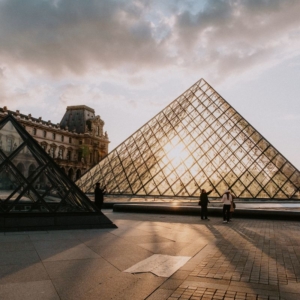Creating a museum-inspired T-shirt is a meticulous process that combines artistic creativity, design skills, and a deep appreciation for art. This journey, from the initial sketch to the final packaging, involves several stages, each contributing to the creation of a unique piece of wearable art.
 1. Sketch
1. Sketch
The first step in creating a museum-inspired T-shirt is the sketch. This is where the initial idea takes shape. Designers often start by studying the artwork they want to feature on the T-shirt, understanding its elements, and interpreting its essence. They then create a series of sketches, experimenting with different compositions, layouts, and ways to incorporate the artwork into a T-shirt design. This stage is crucial as it sets the foundation for the design and allows the designer to visualize the final product.
2. Design
Once the sketch is finalized, the next step is the design. Using digital design tools, the sketch is transformed into a detailed, colorized design. This stage involves refining the elements of the sketch, choosing the right colors, and ensuring the design aligns with the aesthetics of the original artwork. The goal is to create a design that not only looks good on a T-shirt but also pays homage to the original artwork.
3. Pattern Choice
The choice of pattern is a crucial step in the process. The pattern, or the cut and style of the T-shirt, should complement the design and enhance its visual appeal. Whether it’s a classic crew neck, a v-neck, or a relaxed fit, the pattern should be chosen with the target audience in mind. The color of the T-shirt also plays a significant role. It should complement the design and make it stand out.
4. Production
The production stage involves printing the design onto the T-shirts. This requires choosing the right printing technique to ensure the design is durable and the colors are vibrant. Screen printing, for instance, is a popular method for its durability and color accuracy. However, other methods like direct-to-garment (DTG) printing can also be used, especially for designs with a lot of detail or a wide range of colors. The quality of the T-shirt material is also important. It should be comfortable to wear and durable enough to maintain its shape and color after multiple washes.
5. Packaging
The final stage of the process is packaging. In line with the growing trend towards sustainability in fashion, many brands opt for eco-friendly packaging options. This could be recycled plastic bags or even innovative roll-up methods that reduce the use of plastic. The packaging not only protects the T-shirt but also enhances the unboxing experience for the customer. It’s an opportunity for the brand to communicate its values and create a memorable first impression.
In conclusion, creating a museum-inspired T-shirt is a complex but rewarding process. It’s a journey that starts with a sketch and ends with a piece of wearable art that brings museum collections into our everyday lives. Each stage of the process, from design to packaging, is a testament to the fusion of art and fashion, and the endless possibilities this combination offers.

